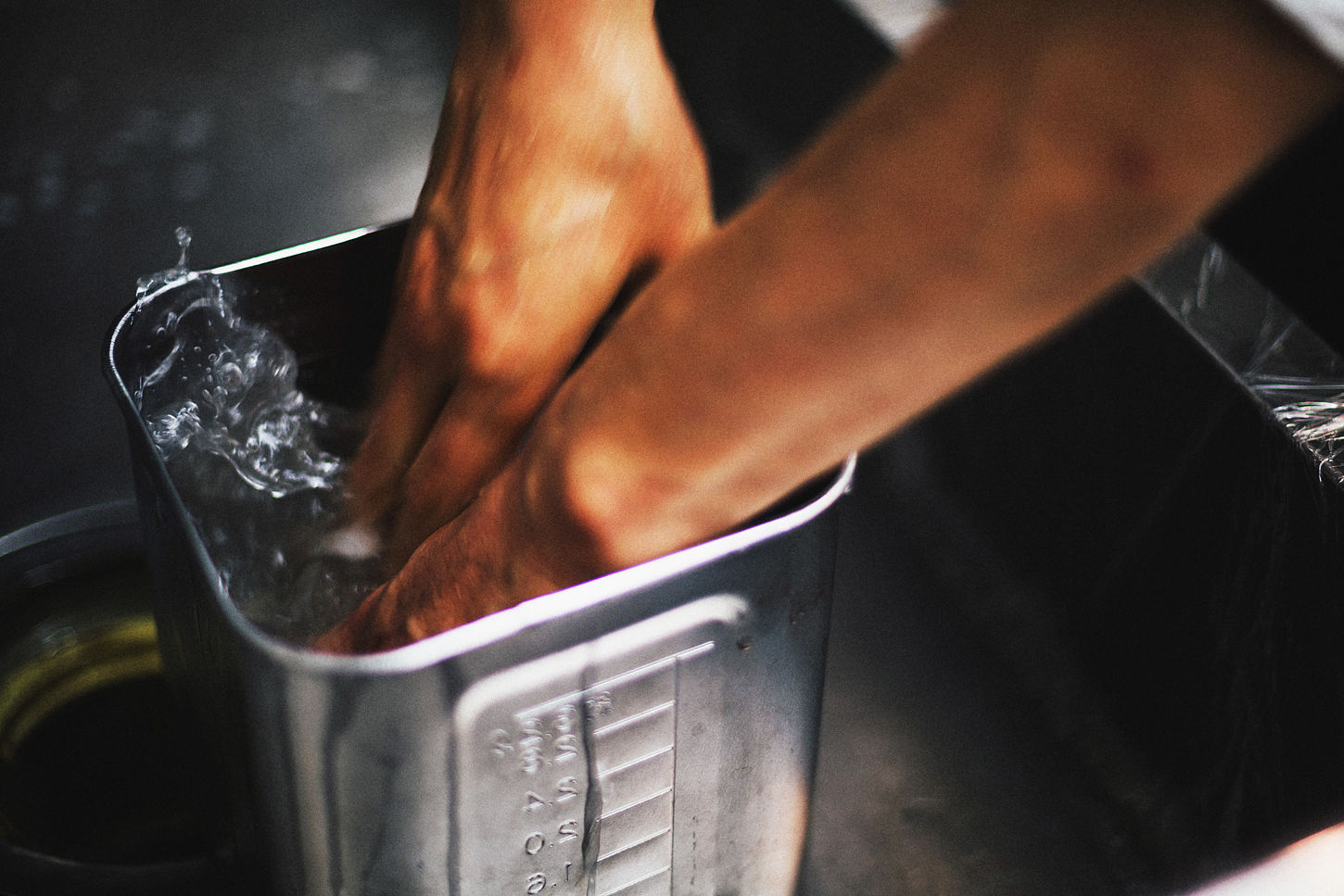top of page
Photo Gallery: Preparation at Ginza Ichibun
Selection
Mr. Ogawa insists that truly exceptional fish possess an almost overwhelming power. Freshness, he explains, is merely one filter among many. Even seafood gathered from across the globe and rigorously selected by trusted brokers must pass yet another test—only a rare few will truly delight his guests. By 5:30 each morning, he is already at Toyosu, examining each specimen one by one with his own eyes and hands. “Every fish is different,” he says gently, yet his gaze as he plunges his hand into the ice water is nothing short of fierce, charged with an intensity beyond mere seriousness.
Click to view the film, with sound.

Anago ( White-spotted conger )
“White-spotted conger demands time and devotion,” says Chef Ogawa.
Delicate to the touch and vulnerable to mishandling, this fish requires an artisan’s patience to reveal its full flavor. Even as he speaks, Chef Ogawa’s hands move without pause — cleansing the head, entrails, and bones with precision, leaving no trace of blood. The bones are gently rinsed in water and sake, grilled to enhance their aroma, and simmered slowly to create a deep, clear broth.
When the flesh has softened to the point where chopsticks can no longer hold it, the remaining bones are removed by hand.

KURUMA-Ebi ( Japanese tiger prawn )
For KURUMA-Ebi (Japanese tiger prawns), true freshness is not an aspiration — it is a necessity. Skewered while still alive, swiftly boiled, and shelled just moments before being placed atop seasoned rice, these prawns demand care from ocean to plate. Because they must be alive until the moment of preparation, we maintain a live tank within the restaurant — a quiet ecosystem overseen with devotion by the chef’s wife.
She adjusts the salt concentration by hand, monitors oxygen levels, and tends to water temperature with delicate precision. “They are such charming creatures,” she says softly, smiling as the prawns glide gracefully across the tank’s floor.
Please note: Due to their sensitivity, tiger prawns are typically available for guests who reserve at least one day in advance.

"Shikomi", preparation
The craft of sushi begins long before a knife touches flesh.
Beneath every piece lies “shikomi” — a quiet ritual of preparation, discipline, and trust in time. In the bright hush of the kitchen, each movement is deliberate: incisions made with care, bloodlines removed with patience, freshness judged by eye and touch alone.
The fillets are salted to draw out excess moisture, gently bound with kelp to impart a whisper of flavor, then rested at ice-cold temperatures where umami deepens slowly, invisibly. Only after days of unseen labor does the fish finally reveal itself — ready to take its place atop a morsel of seasoned rice.

bottom of page
















